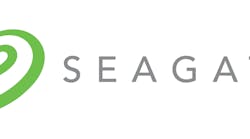With continued advancements in video surveillance camera resolution, powerful new capabilities and sophisticated software, video solutions are delivering even greater flexibility and performance, increasing the already integral role these systems play in protecting people, locations and assets.
On top of that is the fact that video is no longer a security-only proposition. Many industries rely on video, analytics and artificial intelligence (AI) to provide insight that guides business decisions or otherwise streamlines various operations.
Retailers, for example, use video surveillance to understand their customers’ habits and take advantage of that intelligence for product placement, marketing, staffing and other decisions that can improve their bottom line. Cities can use video to monitor and analyze traffic patterns to eliminate bottlenecks and develop more efficient travel corridors to alleviate congestion and decrease commute times.
All of these video surveillance trends mean greater ROI and flexibility, but with that comes a cost – namely the generation of more data, which creates the need for higher-capacity storage solutions. The AI data behind video analysis is also being recorded simultaneously with video, further compounding this conundrum, as do longer retention periods and increased camera counts.
With all this in mind, video storage can no longer be an afterthought – it must be a vital part of the planning, design and deployment of surveillance systems. Obviously, one of the main criteria integrators should use for selecting storage solutions is hard drive capacity, but reliability and durability are also important considerations.
While cost obviously plays a role in choosing the components of any security system, considering the potential consequences of lost video frames or drive failure, the lowest-priced storage solutions can ultimately turn out to be expensive in terms of liability, legal and other ramifications; thus, it makes sense for integrators to consider surveillance-optimized storage solutions that offer health-monitoring capabilities.
Video Loss and its Potential Consequences
Given the increased importance of video for both security and operational purposes, losing even a few frames of video is simply not an option; however, this is precisely what can happen when a hard drive fails. Any lost video creates a void, and the information it contains – which could prove very valuable – is lost forever.
In this case, the cost to an organization could be staggering. For example, a company required to supply video to demonstrate compliance with regulations could face hefty fines, sanctions, loss of licenses, or even closure. Other potential consequences include loss of reputation, financial loss or even complete business failure.
Hard drive failure also impacts integrators, who are responsible for repairing and maintaining the solutions they install. Additionally, customers who face fallout from lost video may hold the integrator responsible, introducing potentially significant legal ramifications.
Beyond these issues, lost video also means loss of any intelligence upon which an end-user relies upon to run their business more effectively, efficiently and profitably. In short, the negative impacts of lost video simply cannot be understated.
The Case for Surveillance-Optimized Drives
One of the best ways integrators can help insulate their customers from video loss and its consequences is by using surveillance-optimized drives. Purpose-built for video applications, these drives offer the features and functions necessary to provide the durability, performance and reliability customers require.
Video surveillance is a write-intensive application, often with around-the-clock workloads, which are extremely taxing on hard drives. Therefore, storage solutions must be capable of keeping up with the demands of these applications to minimize – if not eliminate – dropped video frames and system downtime.
Unfortunately, it is often tempting to address customers’ increased capacity requirements with lower-cost, moderate-capacity desktop drives for their video security systems. While controlling costs is a noble endeavor, this is hardly the best solution, and may actually end up being more expensive in the long run – whether from equipment failure, costs associated with downtime or both.
Meeting increased storage needs with limited-capacity solutions means installing more drives, which occupy more space and introduce more potential points of failure. With environmental factors playing a key role in drive longevity, the heat generated by a large number of drives is hardly conducive to providing uptime and reliability. On the other hand, surveillance-optimized drives have RV sensors that account for multi-bay environment vibration (which can significantly throw off performance even if it is minimal). In other words, surveillance drives are vibration tolerant for multi-bay environments, which is a distinguishing feature that separates these solutions from desktop drives.
In addition to physical limitations, inexpensive desktop drives lack many of the features and functions necessary for optimizing today’s video security systems. Most notably, desktop drives only operate eight hours a day, five days a week. They are not designed to support large camera counts like surveillance-optimized drives.
Features and Functionality
The primary benefit of surveillance-optimized drives is their extremely high capacity, up to 14TB – which can enable months of 24x7 recording of high-quality video, depending on resolution, frame rates and compression. These longer retention periods make video data more quickly and easily accessible for review and analysis.
With more than four times the capacity of many low-cost desktop drives, surveillance-optimized solutions also enable end-users to easily deploy additional cameras to increase the coverage of their video system, upgrade to higher-resolution cameras or increase frame rates.
In addition to higher capacity and performance, these drives also operate with an extreme workload rating. Writing data can represent up to 90-95 percent of a drive’s operation, and surveillance-specific solutions are optimized for high performance with both seek- and write-caching firmware, and this increased write functionality significantly contributes to favorable performance and drive longevity. In addition to writing at a very high speed, these drives also enable users to read back video and data at a high speed at the same time, rather than having to choose between reading and writing the data at any given time.
Power consumption is another area where these solutions excel by offering energy-conservation features, such as the ability to place any drive within a system into power-saving mode when it is not actively in use. This significantly enhances system cooling efficiency, boosting overall system reliability. With fewer drives required to provide needed storage capacity, there are fewer potential points of failure, which also contributes to overall reliability.
In light of the increased role of video in providing intelligence, whether for security or operations, it is also important to note that surveillance-optimized drives are more capable than their lower-cost cousins of supporting AI streams that contain the knowledge tied to every frame, which is used for deep learning applications while simultaneously managing video streams. This knowledge enables information to be located more precisely and efficiently to enable more intelligent decisions.
Health Monitoring
Drive health monitoring is also important for continuous data integrity and reliability. That said, integrators should make storage solutions that include custom features to intelligently deal with potential issues part of any security solution to ensure maximum uptime and availability of video.
To monitor drive health, software analyzes parameters to gather information on operating and environmental conditions, such as temperature, vibration and other factors. Armed with this data, its AI-algorithms recommend preventative measures and potential interventions depending on a drive’s current health. If the drive has deteriorated, the solution may recommend a full backup to prevent video and data loss.
Drive health monitoring empowers users to prevent, intervene and recover from potential anomalies, ensuring long-term durability and the ability to operate in harsh environments, withstanding a variety of temperature changes.
Jessica Burton is Global Surveillance Product Manager for Seagate Technology. Request more info about the company at www.securityinfowatch.com/10214925.



